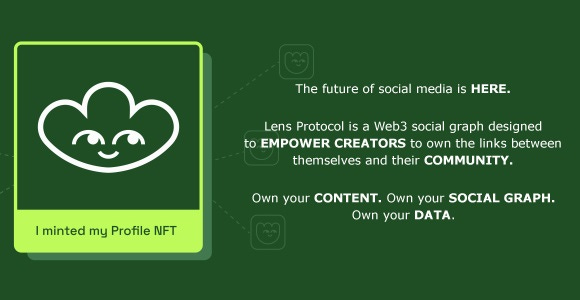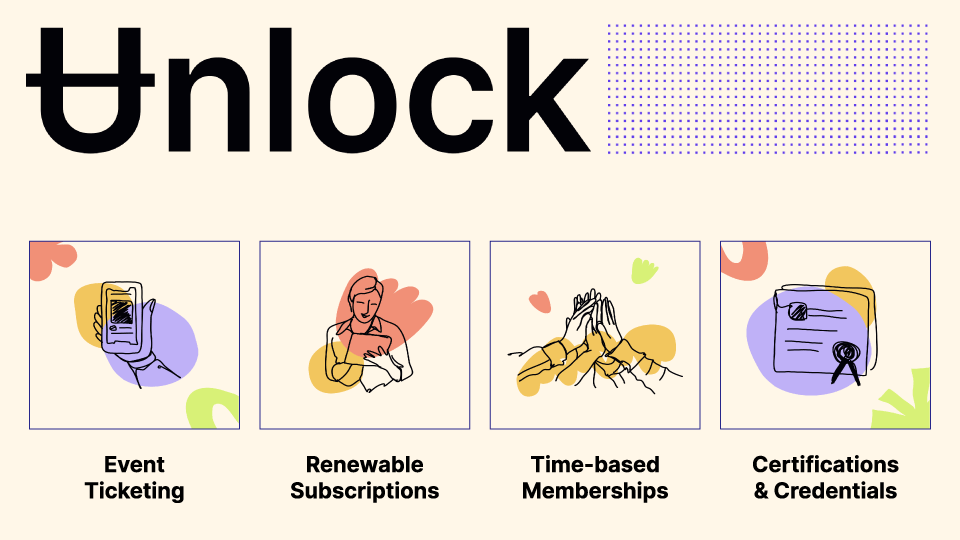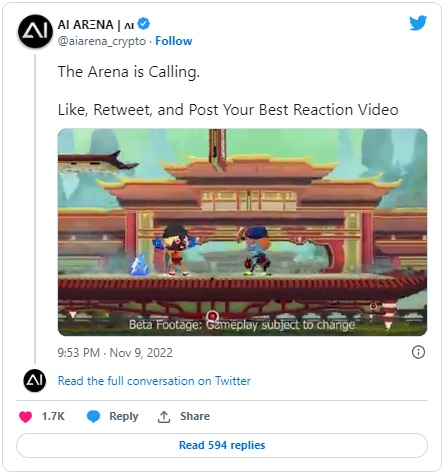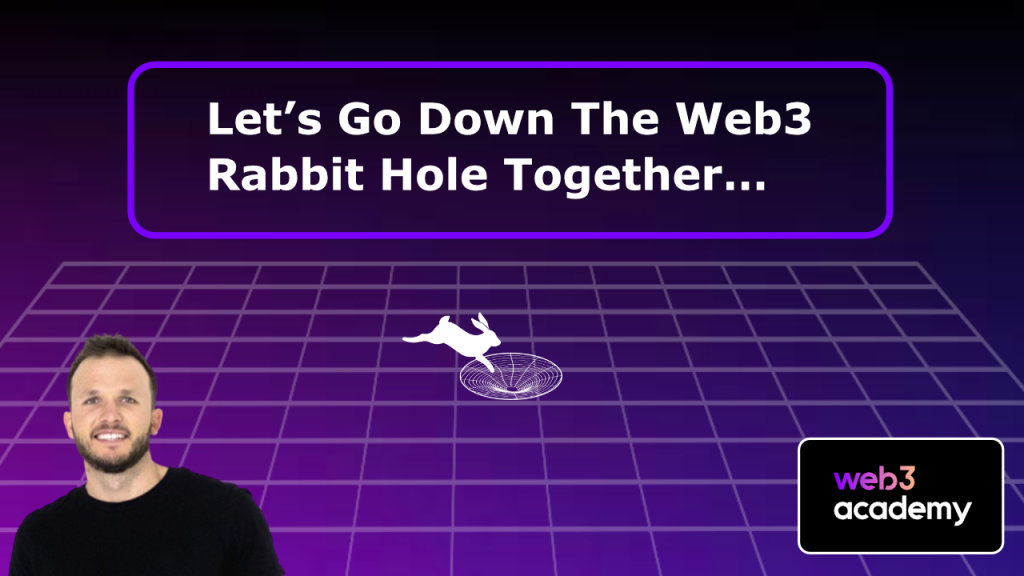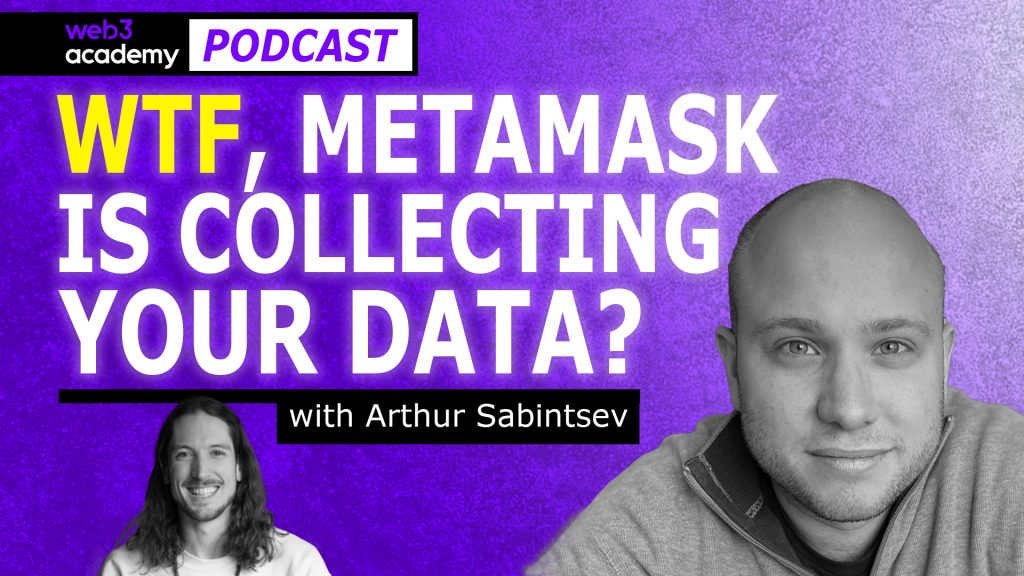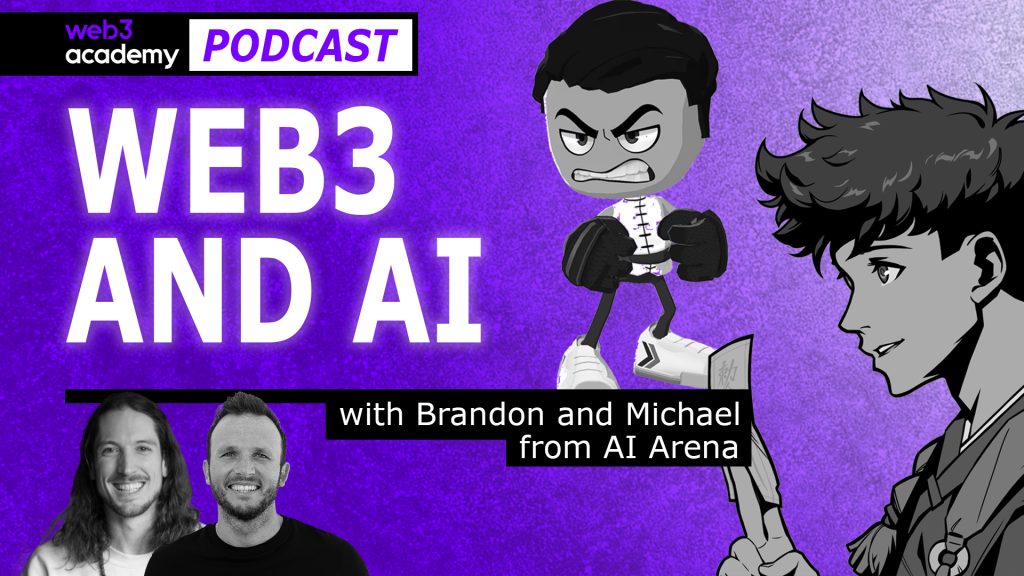
The Intersection of AI & Web3 | Brandon & Michael from AI Arena
AI and Web3 Are Powerful Technologies Alone, but Can They Work Together?
Prefer listening? Get some AI and web3 alpha on your favorite platform 👇
GM web3 explorers!
Artificial intelligence (AI) is seeing a resurgence in global interest with tools, such as chatbots and automated content creation, seeing mainstream adoption.
This technology promises to help us efficiently complete data-heavy tasks, improve our decision-making, solve complex problems, and much, much more. 🧠
But the question is… what role will AI play in web3 (and vice versa)?
To shed some light on this question, we invited Brandon Da Silva and Michael Moscarelli from AI Arena to chat about the intersection of AI & Web3.
In this edition, we break down:
- What AI is and how it compares to web3 🤔
- Potential use cases when combining AI and web3 🤝
- How AI Arena is using NFTs and gaming to teach users about AI 🎮
Let’s dive in.
🤝 Together With Lens: The Evolution of Social Networking 👀
Understanding AI & Web3
Before we get into the exciting use cases for AI and web3, it’s important that we understand both of them.
When we talk about web3, we think about it as a new technical infrastructure that enables digital ownership and interoperability across the internet.
It’s essentially a tech layer that makes the way we use the internet more similar to the physical world.
For example, if you own a TV, it’s yours and you have the freedom to do anything with it (e.g., sell it, throw it away, move it to another house, etc.). Web3 allows us to do the same with digital assets.
AI, on the other hand, is a new technology that brings logic to data.
You can think of it as a tech layer that makes robots or machines more similar to humans. It helps machines perceive, synthesize, and infer information based on their previous experiences.

For example, the content Instagram serves you each day is based on how you interact with the platform. If you start watching more cat videos, IG’s algorithm will start showing you more of the same.
To dive a bit deeper, AI is broken into two subsets—expert systems and machine learning (ML).
Expert systems rely on people to code logic statements that the AI will then follow. For example, if a person presses “A”, make the game character jump.
The main difference between expert systems and ML is that the former requires prior knowledge to execute tasks whereas the latter starts as a blank slate and learns by processing data through various learning algorithms.
The Relationship Between AI and Web3 (And How They Can Work Together)
AI, and in particular ML, are extremely powerful technologies that can improve many facets of business and life.
But there are limitations and hazards to be aware of.
For example, the monopolization of a global AI model, such as one in the financial system, could give extreme power to one (or a few) organizations. 🤯
Another issue is that code can easily be copied. So if you were to sell an AI model, the buyer could share or even re-sell the code themselves. And if you were a buyer, how would you know that the person you’re buying the model from actually created it themselves?
You don’t. It’s all about trust.
And you know why we love blockchain? Because it’s trustless technology that doesn’t require, wait for it… human trust.
Now, web3 and AI never have to intersect to be successful in their own rights. But the benefits of decentralizing and democratizing AI models are well worth the effort.
For example, Brandon wanted to create a decentralized smart routing algorithm that automatically decides which DEX to use to minimize slippage and trading fees. But instead of a company owning and profiting from the algorithm, the model functions as a public on-chain good that anyone can access.
And the key to achieving outcomes like these is by wrapping AI models into the web3 layer through NFTs (or future token standards). 🪙
Some of the other areas we can improve and enable by combining AI and web3 include:
- Exchanging intellectual property.
- The machine economy.
- Supply chain management.
- Education and credentialing.
Let’s break them down further.
1. Exchanging Intellectual Property
Any AI model falls under intellectual property (IP) because someone created it.
However, exchanging IP is technically impossible without a centralized intermediary. When it comes to AI models, you need a third party to verify the ownership and performance of a model before buying it—especially if there’s significant money on the line. Otherwise, you’re simply relying on trust.
The problem with this is that most AI creators wouldn’t want to share the inner workings of their models to prove performance. And when it comes to ownership, it’s difficult to track the provenance of code.

But by combing it with web3 technology, you can demonstrate immutable ownership history through on-chain records and testify to the model’s performance through zero-knowledge proofs. ZK proofs are essentially a way to prove the validity of an AI model without revealing the code behind the model.
This ensures a fair exchange of value between the buyer and the seller while protecting the creator’s IP through encryption.
2. The Machine Economy
As AI improves many people believe that machines will do the bulk of our daily work with humans acting as supervisors.
These interactions can be relatively simple in closed environments, such as factories.
But what happens when disparate AI need to interact with each other IRL like we do when we go to the store or fill up gas?
We need web3 to facilitate these interactions. 🤝
For example, say you have a self-driving Tesla and a smart charging station that can communicate with each other. You could send the Tesla to the charging station while you’re having a meal and your Tesla could pay for its usage in crypto without the need for third parties and additional verification.
3. Supply Chain Management
AI has tons of potential in supply chain management due to its learning speed. By analyzing huge amounts of data it can easily choose the best shipping routes, know when certain products should be ordered, and more.
But how does a human know that the AI model is using the correct data? Unless they incorporate additional quality checks into the process, they don’t.
And the drawback is that doing so is inefficient. ❌
Instead, web3 technology can ensure that supply chain data is verifiably accurate. It also makes it easier to track goods across different stages of the supply chain without relying on human confirmation.
4. Education and Credentialing
AI models have the potential to significantly speed up how we learn new skills.
In fact, Kyle recently watched a video on AI models being used to teach English in schools. The result? Students were learning English twice as fast as they were when compared to traditional methods!
Why? AI models are always learning and adapting to the inputs they receive so they can cater to an individual’s unique learning style and prior knowledge.
Brandon and the AI Arena team even use AI tools when they’re stuck with certain code. They simply ask ChatGPT (an AI tool) how to solve a particular problem and it replies with the best solution it can find.
He also believes that (if not right now, sometime in the near future) you could use a tool like ChatGPT to design learning plans. For example, you could just ask for the most efficient way to learn to code and it’d spit out a plan for you to follow.
But the real unlock comes from combining AI teaching with on-chain credentials. ⛓️
The AI model can teach you in the most efficient way possible and then web3 technology can give you a verifiable credential to show off to future employers.
While these are some obvious use cases, we’re still so early in the adoption and use of these technologies that we don’t really know what use cases people will develop in the future.
But what we do know is that they will change the future of humanity.
🤝 Together with Unlock Protocol: Create Memberships and Subscription NFTs in Minutes! ⚡
What Is AI Arena and How Does It Work?
AI Arena is a player-versus-player fighting game that looks very similar to Nintendo’s Super Smash Bros. But that’s where the similarities end.
There are two sides to the game, one where someone trains a character by manually playing the game and the other where someone actually designs the learning algorithms behind the character.
For simplicity, we’ll focus on the former.
In the beginning, the character doesn’t know how to do anything. So you have to teach it how to fight by playing the game manually. The AI’s learning algorithms then analyze how you battle, picking up the skills it needs to function autonomously.
Here’s what that looks like:
Once you’ve done some battling you can use the AI inspector to look into the “brain” of the AI to understand the skills and thought patterns it has learned in different situations. Then you can use this information to fine-tune your battling style to improve your character.
So the better you are at fighting strategy, the better your AI character will be as well. 💪
Then once you think your AI is capable of fighting competitively, you can send it off to fight on its own and earn its glory in the AI Arena.
But the game isn’t just about having fun. It’s a way for people to learn about AI and build on-chain records of their models which they can use as examples to demonstrate their expertise.
Besides this, AI creators and players will also be able to profit from the AI Arena ecosystem. Since characters will be NFTs, owners can trade their best performers or simply use them to earn tokens or prizes from the fighting itself.
Now, that all sounds great. But don’t I need technical knowledge to play this game?
Not at all.
The playing aspect of AI Arena requires no AI experience whatsoever, but you do learn as you play. AI experience does help in some aspects but doesn’t provide an outright advantage. In fact, the top five winners of the game’s recent beta tests haven’t been AI developers. 😎
On top of this, AI Arena newbies are learning at such a fast pace because of the fun interactive environment that they’re even teaching brand-new players about AI topics.
For example, a player on day two of their AI journey was already teaching newer players about sophisticated topics, such as how to properly collect data to ensure a balanced data set.
Right now, AI Arena is still running closed beta tests focusing on the no-code, player-centric side of the game with the AI development side potentially launching towards the end of 2023. They also have plans to launch both a free-to-play and NFT gated version of the game.
If you want to stay up to date on everything AI Arena, you can check out their Twitter.

SOCIALS
Tweet of the Week
First Gaming, Then the World
The study of AI has been around for a long time, but we’re only just seeing the fruits of this technology because our hardware hasn’t been powerful enough—until now.
Both AI and web3 have the power to revolutionize how we interact with each other and the world. But by combining them together, we can truly reach The Exponential Age where innovation accelerates to unprecedented levels. 🚀
Besides being a fun, ingenious way of combining AI and web3, AI Arena is laying the foundations to bring these two technologies closer together.
We’ve outlined some of the reasons for tokenizing AI, but the possibilities truly are endless.
Michael likes to think of web3 and AI to be where the internet was in the 90s. At that time, people would never have guessed that we’d spend most of our time on the internet or that it would allow millions of people to work remotely.
Are AI and web3 the keys to the machine economy where humans spend all their hours on creative pursuits? Or will it be more of a Skynet situation with SBF as the Terminator? 🤖
Only time will tell.

FOR THE DOERS
Take Action & Level Up
READ
AI is one trend that’s bound to change web3, but here are six more: The 6 Most Important Web3 Trends for 2023.
FOLLOW
Ensure you don’t miss out on Raul’s shitposting by following Web3 Academy on Twitter!
WATCH
If you haven’t already, make sure you check out this short video on Decentralizing Your MetaMask Wallet to protect yourself from data collection.




